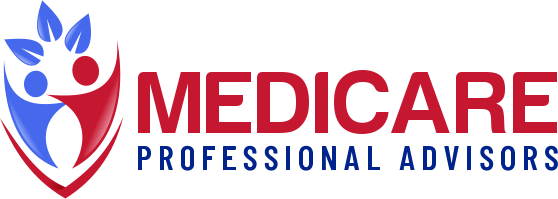Medicare Advantage
Need an affordable or
$0 premium Medicare Plan?*
About Medicare Advantage (Part C) Plans
- What is a Medicare Advantage plan?
- Types of Medicare Advantage (Part C) plans
- Eligibility for Medicare Advantage plans
What is a Medicare Advantage plan?
If you currently are enrolled in Original Medicare, Part A, and Part B, you can choose to enroll in Medicare Part C, more commonly known as Medicare Advantage. Medicare Advantage plans are offered by private health insurance companies to provide and coordinate Medicare Part A and Part B benefits (hospital and medical) for beneficiaries.
You might wonder why a beneficiary would choose to enroll in a Medicare Advantage plan. A Medicare Advantage plan is required to cover everything that Original Medicare covers (except for hospice care), including emergency and urgent care. Hospice care is covered by Original Medicare, and hospice benefits continue to be covered by Original Medicare even if you have a Medicare Advantage plan. But, there can be some differences between Original Medicare and a Medicare Advantage plan. Those differences can be in how much you pay out of your own pocket when you receive health care. For example, you might have lower copayments and coinsurance or a smaller deductible.
Medicare Advantage offers at least the same coverage as Original Medicare and may offer additional benefits. It may be one way of adding coverage for routine vision, or dental services, dentures, and more. Some Medicare Advantage plans have a $0 premium. However, regardless of how much you pay for a Medicare Advantage plan, you must continue paying your Medicare Part B premium.
There can also be differences in the coverage you receive. Some Medicare Advantage plans include routine vision, routine dental, and/or wellness programs. Many plans also include prescription drug coverage; those plans are called Medicare Advantage Prescription Drug plans (MAPD).
Do be aware that you would remain enrolled in Original Medicare even if you enroll into a Medicare Advantage plan, and you must continue paying your Medicare Part B premiums. However, if you enroll in a Medicare Advantage plan, you will not be allowed to obtain a Medicare Supplement insurance plan (Medigap).
Types of Medicare Advantage (Part C) plans
It’s important to understand the differences between the types of Medicare Advantage plans to see which works best for you. There are several different types of Medicare Advantage plans:
- HMO (Health Maintenance Organization plan): Lets you see doctors and other health professionals who participate in its provider network. If your doctor is already in network, it could be a good option because you tend to pay less out-of-pocket with in-network doctors.
- PPO (Preferred Provider Organization plan): Covers both in- and out-of-network providers, giving you the freedom to choose any doctor that accepts Medicare assignment, which can work if you prefer that kind of flexibility.
- PFFS (Private Fee-for-Service plan): The plan determines how much it will pay providers and how much you must pay when you get care. The treating doctor has to accept the plan’s payment terms and agree to treat you. If the doctor doesn’t agree to those terms, then the PFFS plan will not cover services through that doctor.
- SNP (Special Needs Plans): Are especially for people who have certain special needs. The three different SNP plans cover Medicare beneficiaries living in institutions, those who are dual-eligible for Medicaid and Medicare, and those with chronic conditions such as diabetes, End Stage Renal Disease (ESRD), or HIV/AIDS. This type of plan always includes prescription drug coverage.
- HMO-POS (Health Maintenance Organization – Point of Service plan): Covers both in- and out-of-network health services, but at different rates. You pay less out-of-pocket when you go to in-network doctors, labs, hospitals, and other health care providers.
- MSA (Medical Savings Account plan): Includes both a high deductible and a bank account to help you pay that deductible. The amount deposited into the account varies from plan to plan. The money is tax-free as long as you use it on IRS-qualified medical expenses, which include the health plan’s deductible.
Eligibility for Medicare Advantage plans
Medicare Advantage plan eligibility is based on your eligibility for Original Medicare, Part A and Part B (except if you have ESRD). Generally, if you have Medicare Part A and Part B, you are eligible for Medicare Part C. However, you must live in the service area for the Medicare Advantage plan that you’re considering.
If you have other health insurance coverage, for example through an employer or union, ask your plan administrator about that plan’s rules before you enroll in a Medicare Advantage plan. In some cases, you may lose your other coverage if you enroll in the Medicare Advantage plan and you may be unable to get it back if you change your mind later.
Enrollment in Medicare Advantage plans
You may only enroll in a Medicare Advantage plan during specified election periods:
Initial Coverage Election Period: You can enroll in a Medicare Advantage plan or Medicare Advantage Prescription Drug plan when you first become eligible for Medicare. Your Initial Coverage Election Period (ICEP), is a seven-month period that starts 3 months before the month you turn 65, includes the month you turn 65 and ends 3 months after the month you turn 65. If you are under age 65 and you receive Social Security disability, you qualify for Medicare in the 25th month after you begin receiving your Social Security benefits. If you fall into this category, you may enroll in a Medicare Advantage plan 3 months before your month of eligibility, during the month of eligibility, and 3 months after the month of eligibility. For example, if your Medicare Part A and Part B coverage begin in May, your Medicare Advantage plan ICEP is February through August.
Annual Election Period: The Annual Election Period (AEP), also called the Open Enrollment Period for Medicare Advantage and Medicare prescription drug coverage, is October 15 through December 7 every year. The plan coverage you choose during the AEP begins on January 1 of the next year. It allows Medicare beneficiaries to add, change, or drop their current coverage. You can use this period to enroll in a Medicare Advantage or Medicare Prescription Drug Plan or switch plans. If you’re already enrolled in a Medicare plan, you can use this period to disenroll from your plan.
Medicare Advantage Open Enrollment Period (OEP): If, after enrolling in a Medicare Advantage plan, you change your mind, you can switch back to Original Medicare from January 1 through March 31. If you would be losing prescription coverage as a result of the switch, you can also enroll in a stand-alone Medicare Part D Prescription Drug Plan during this time, if you wish.
Special Election Period: Generally, once you enroll in a Medicare Advantage plan, you stay enrolled in the plan until the next Annual Election Period (AEP) opens. However, there are some life events that might qualify you for a Special Election Period (SEP) during other times of the year, so you can make a change to your Medicare Advantage coverage. Some examples of these life events include (but aren’t limited to):
- Moving outside your Medicare Advantage plan’s service area
- Qualifying for Extra Help (a program to help you pay for prescription drugs)
- Moving into an institution (such as a nursing home)
Find out more Many Medicare beneficiaries opt for a Medicare Advantage plan. To see if this route may be a good idea for you, contact eHealth’s licensed insurance agents. We have the knowledge to answer your Medicare Advantage plan questions.
Medicare information is everywhere. What is hard is knowing which information to trust. Because Medicareprofessionaladvisors are following the CMS regulations, you can rest assured you’re getting accurate information so you can make the right decisions for your coverage.

Find a $0 premium
Medicare plan today.
Speak with a licensed insurance agent
1-800-518-3986
TTY 711, 24/7
+65 Agents, +3,834 Plans,
Medicare Parts
Medicare Part A
Part A of Medicare covers hospitalisation. Inpatient treatment, limited time in a licenced nursing facility, limited home health care services, and hospital care are all covered under Part A.
Medicare Part B
Non-hospital medical costs such as doctor's appointments, blood tests, x-rays, diabetes testing and supplies, and outpatient hospital treatment are covered by Part B benefits. For this component of the original health insurance, you pay a monthly fee.
Medicare Part C
In a health insurance plan, Medicare Advantage or Medicare Part C normally covers all forms of health insurance coverage. Private insurance businesses that have been contracted by the CMS to provide a medicare plan as an alternative to the original health insurance plan provide it.
Medicare Part D
Medicare Part D is a prescription medication coverage option. Part D health insurance is available as a stand-alone plan from private insurance firms, with monthly rates varying from one to the next. Depending on the plan you're registered in, you'll split the cost of your prescription medicines.
we’re here to all your questions
We’ve helped over 9 million senior people compare their best Medicare coverage options.
Why should I consider Medicare Advantage?
You get the same coverage as Original Medicare plus additional benefits from the Medicare Advantage insurance provider when you enroll in a Medicare Advantage plan.
What additional benefits and savings may be available?
There are many of savings to be had, but here are a handful you might not be taking advantage of right now:
- Your Social Security benefit will be reduced by $144 each month.
$2,500 to spend on dental procedures such as crowns, implants, and dentures. - $1,000 to spend on vitamins and aspirin at your neighbourhood drugstore
- Hearing aids and batteries cost $2,000
- $300 will be used on eyeglasses and tests.
Can’t I just find all this information through government websites?
It’s not simple to learn the ins and outs of Medicare. While Medicare.gov has a wealth of information, there is no real how-to when it comes to determining what is best for you and your lifestyle.
This is where we can help! We put our 20+ years of industry experience to work for you, giving you the peace of mind that you’re getting what you’re entitled to without the hassle.
When can I enroll in a new Medicare plan?
- Initial Enrollment Period – Most persons can enrol in Medicare Part A, Part B, Part C, and/or Part D for the first time within a seven-month period: three months before, three months during, and three months after they reach 65.
- Special Enrollment Period (SEP) – Certain life circumstances, including as moving or losing current coverage, may qualify you for coverage. You usually have two months to enrol, depending on your circumstances.
- Medicare Part C & D Annual Enrollment Period (AEP) – Every year, from October 15 to December 7, Existing Medicare beneficiaries can take advantage of this time to review and adjust their Medicare Advantage (Part C) and Medicare prescription medication plans (Part D). You cannot utilise AEP to enrol for the first time in Part A and/or Part B. The following year’s coverage begins on January 1st.
- Medicare General Enrollment Period – Every year, from January 1 to March 31, While the majority of individuals will receive Part B coverage when they join in Medicare, this period is allocated for those who did not enrol in Part B when they initially became eligible. Coverage begins on July 1st of the following year.
- Medicare Advantage Open Enrollment Period (OEP) – Every year, from January 1 to March 31, You can change to a different Medicare Advantage plan with or without medication coverage during this period, or move to Original Medicare and join a separate Medicare Prescription Drug plan. You cannot, however, go from Original Medicare to a Medicare Advantage plan, join a prescription drug plan while on Original Medicare, or change from one prescription drug plan to another prescription drug plan while on Original Medicare.







